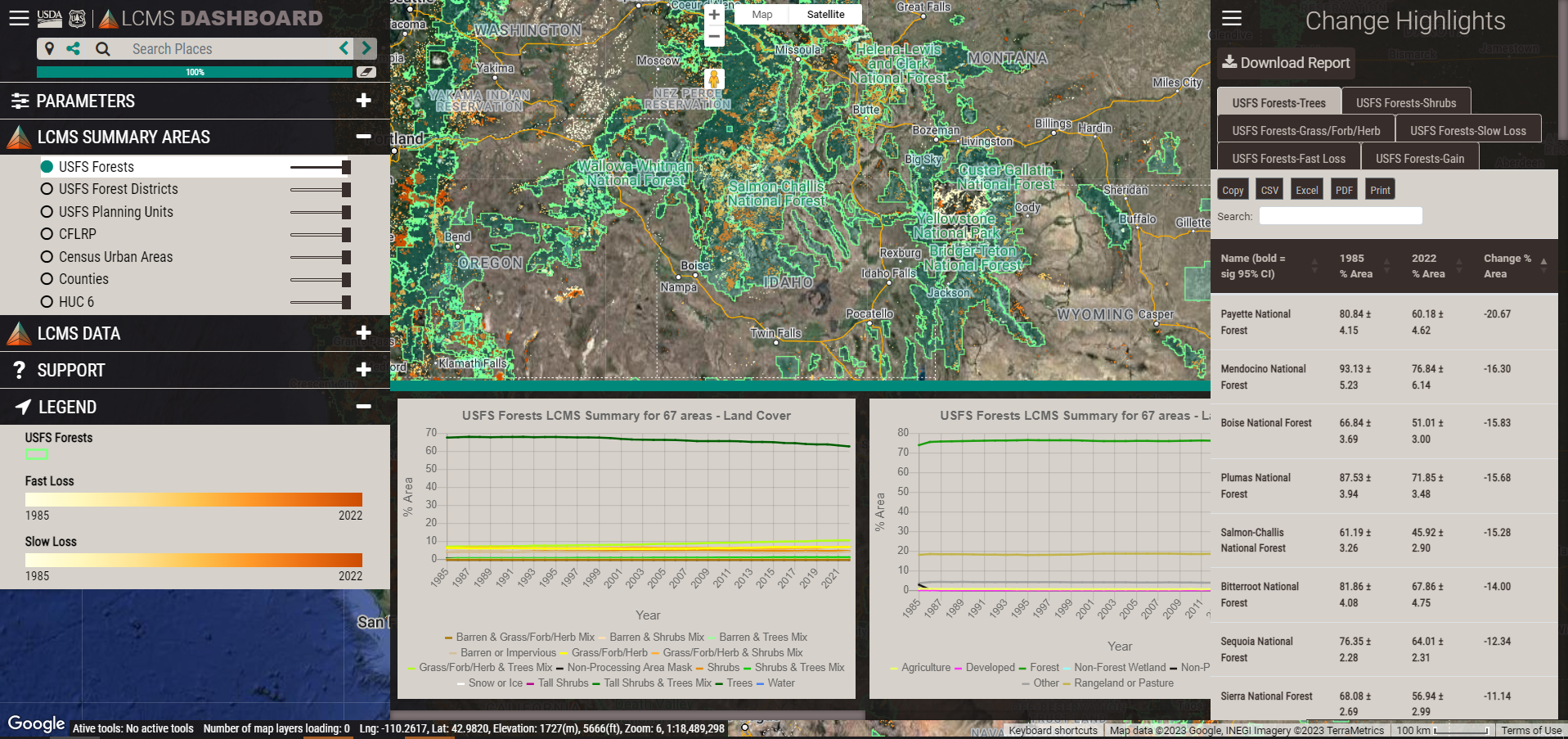Landscape Change Monitoring System (LCMS) is a remote sensing-based system for mapping and monitoring landscape change across the United States.
Who: LCMS is produced by the U.S. Department of Agriculture Forest Service Geospatial Technology and Applications Center (GTAC).
What: Annual data layers of
- Vegetation cover Change
- Land Cover
- Land Use
When: 1985 to 2023
Where: Conterminous U.S. (CONUS), Southeastern Alaska (SEAK), Puerto Rico and U.S. Virgin Islands (PRUSVI), and Hawaii (HI)
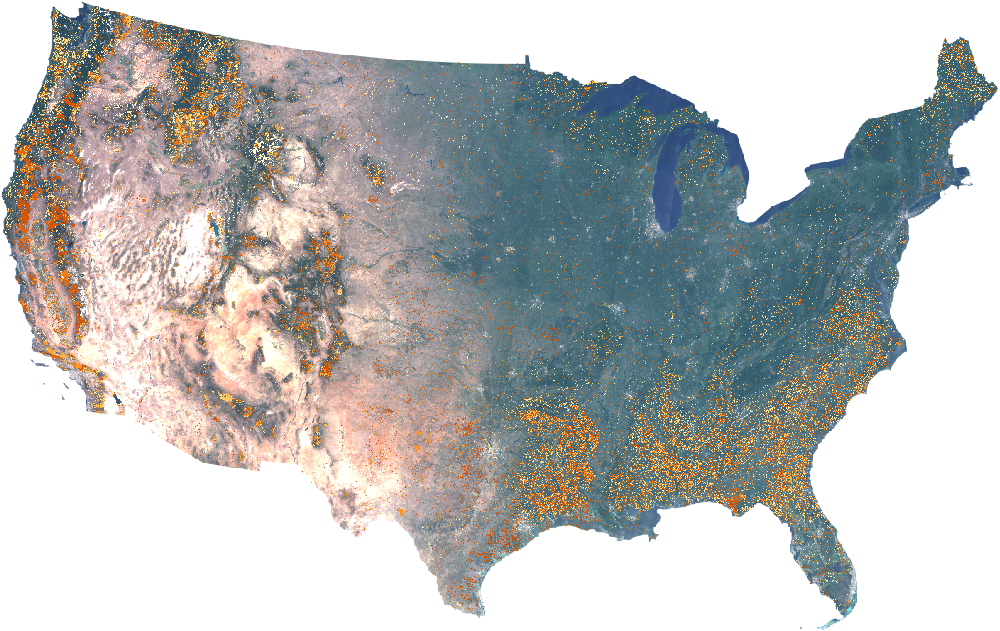
APPLICATIONS
Monitor annual change
Vegetation cover changes caused by short and long-duration disturbance events
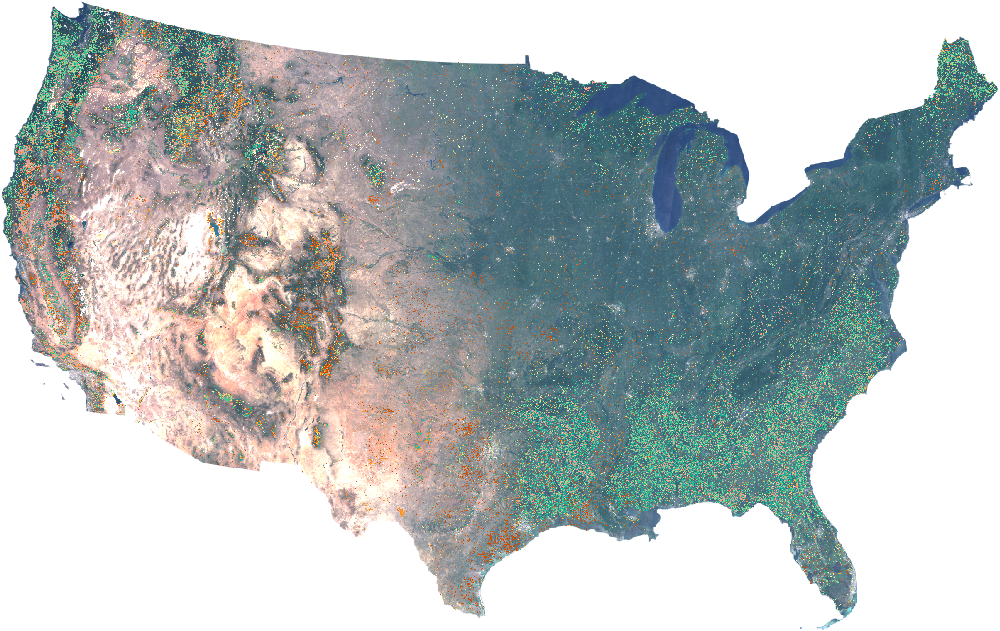
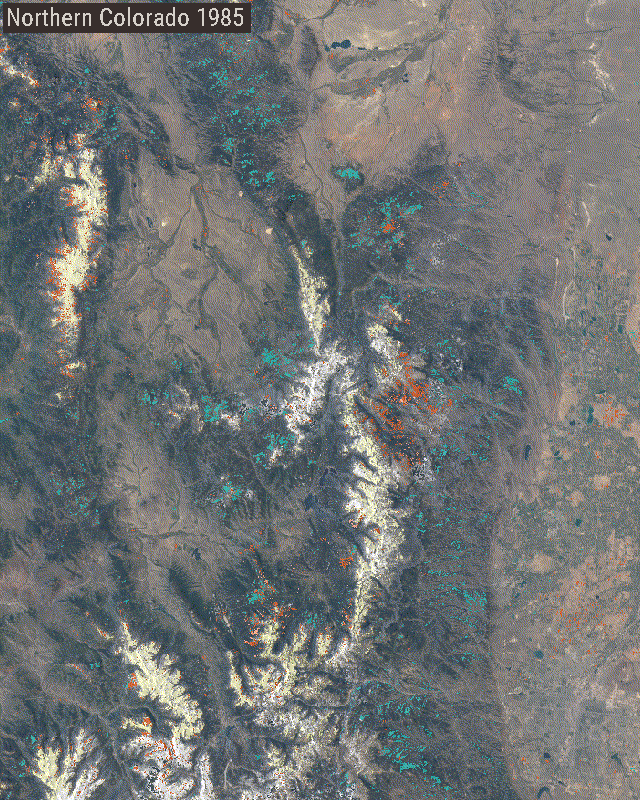
-
Slow Loss
-
Fast Loss
-
Gain
Changes from insects, disease, and wildfire, Colo.
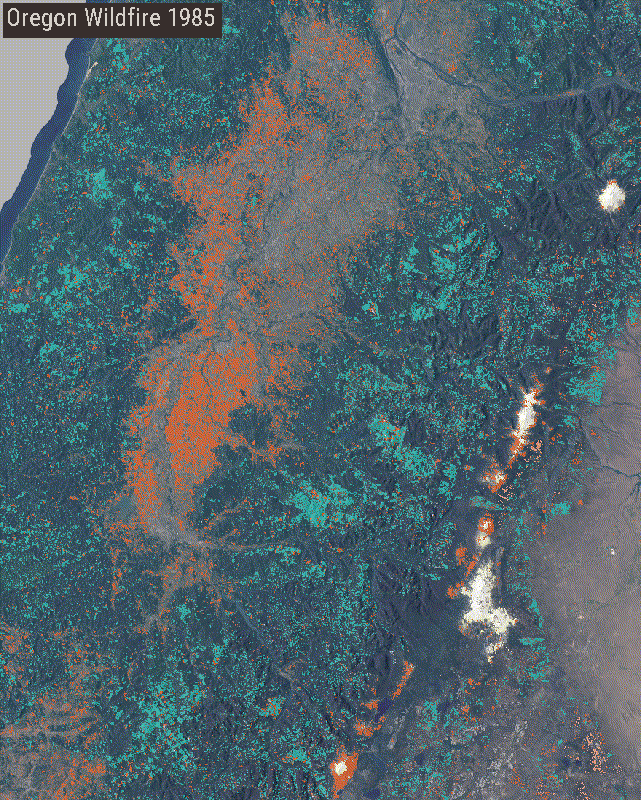
-
Slow Loss
-
Fast Loss
-
Gain
Vegetation change largely caused by timber harvest and wildfire in the Willamette National Forest, Oreg.
Monitor annual land cover changes
Surface components of the land that are present and visible
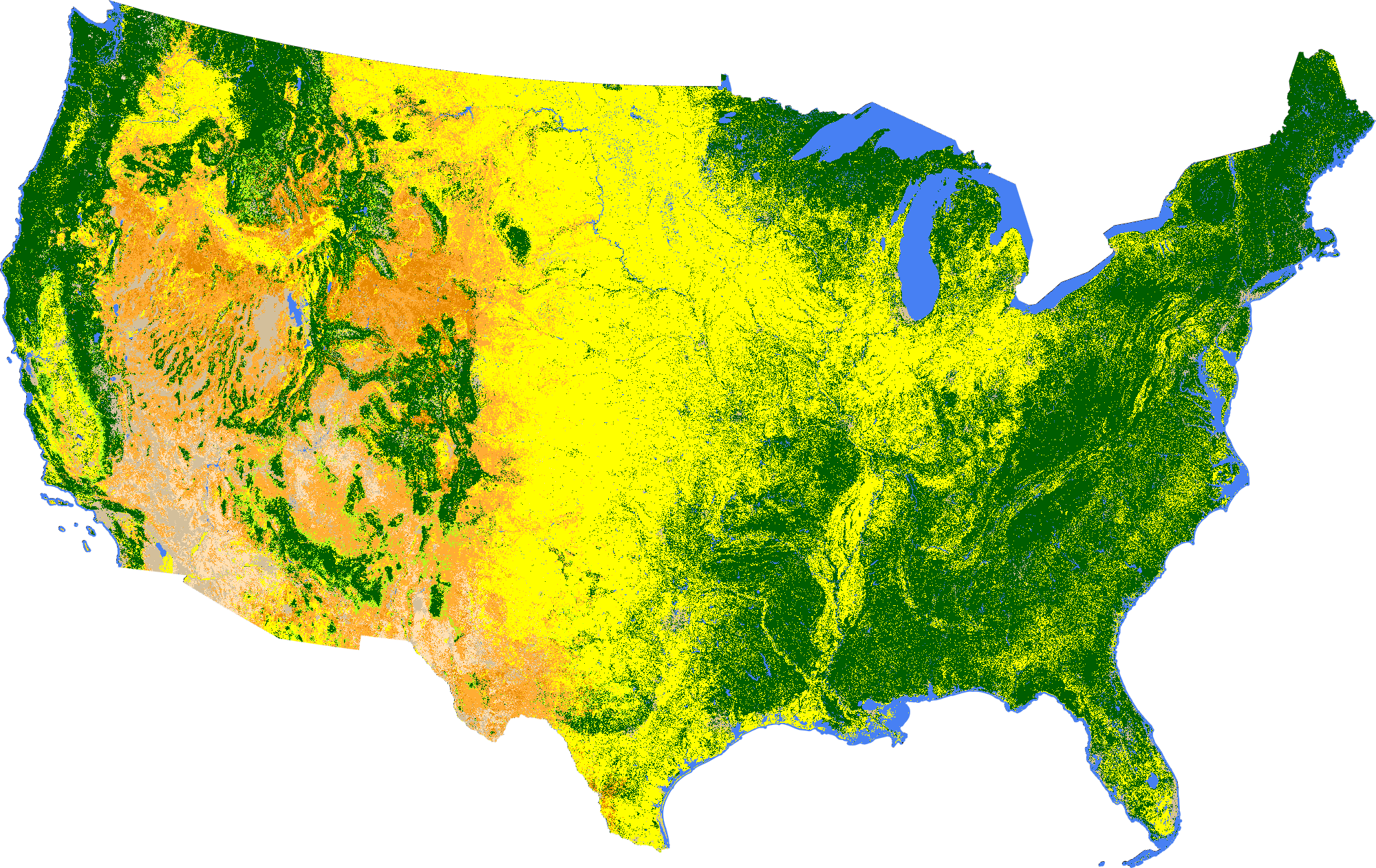
- Trees
- Tall Shrubs- Trees
- Shrubs-Trees
- Grass- Trees
- Barren- Trees
- Tall Shrubs
- Shrubs
- Grass- Shrubs
- Barren- Shrubs
- Grass
- Barren- Grass
- Barren or Impervious
- Snow or Ice
- Water
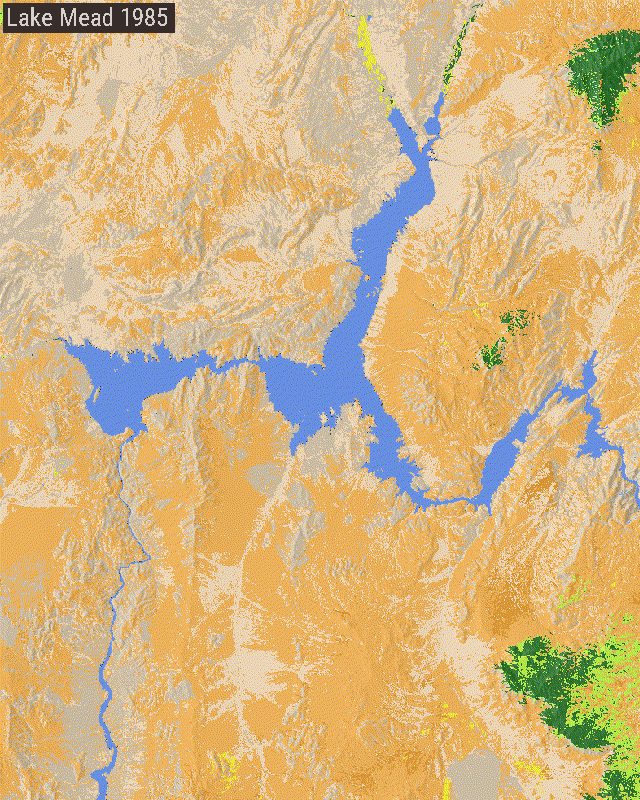
Change in Lake Mead water level, Nev. caused by water consumption & decadal drought
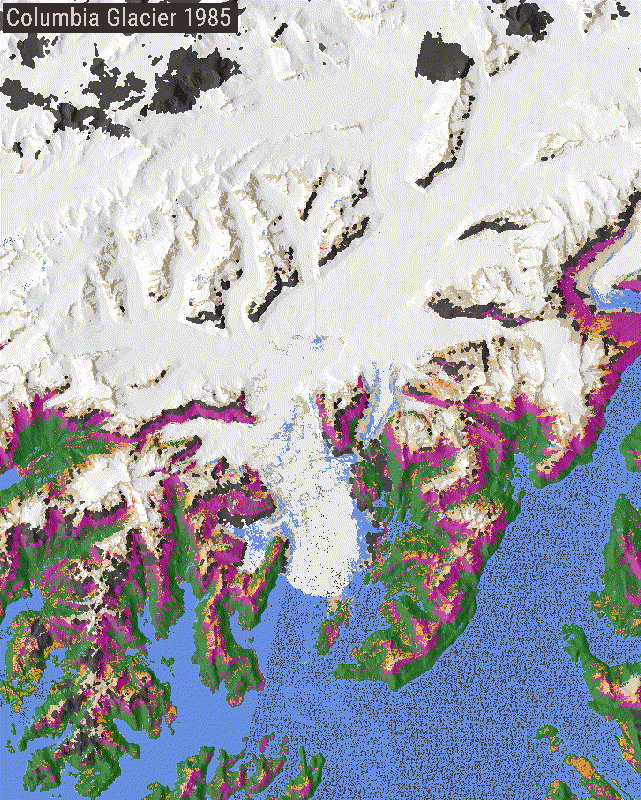
Change in extent of the Columbia Glacier, Alaska
Monitor annual land use changes
Intended human use of the land that represents economic and cultural activities practiced at a given place
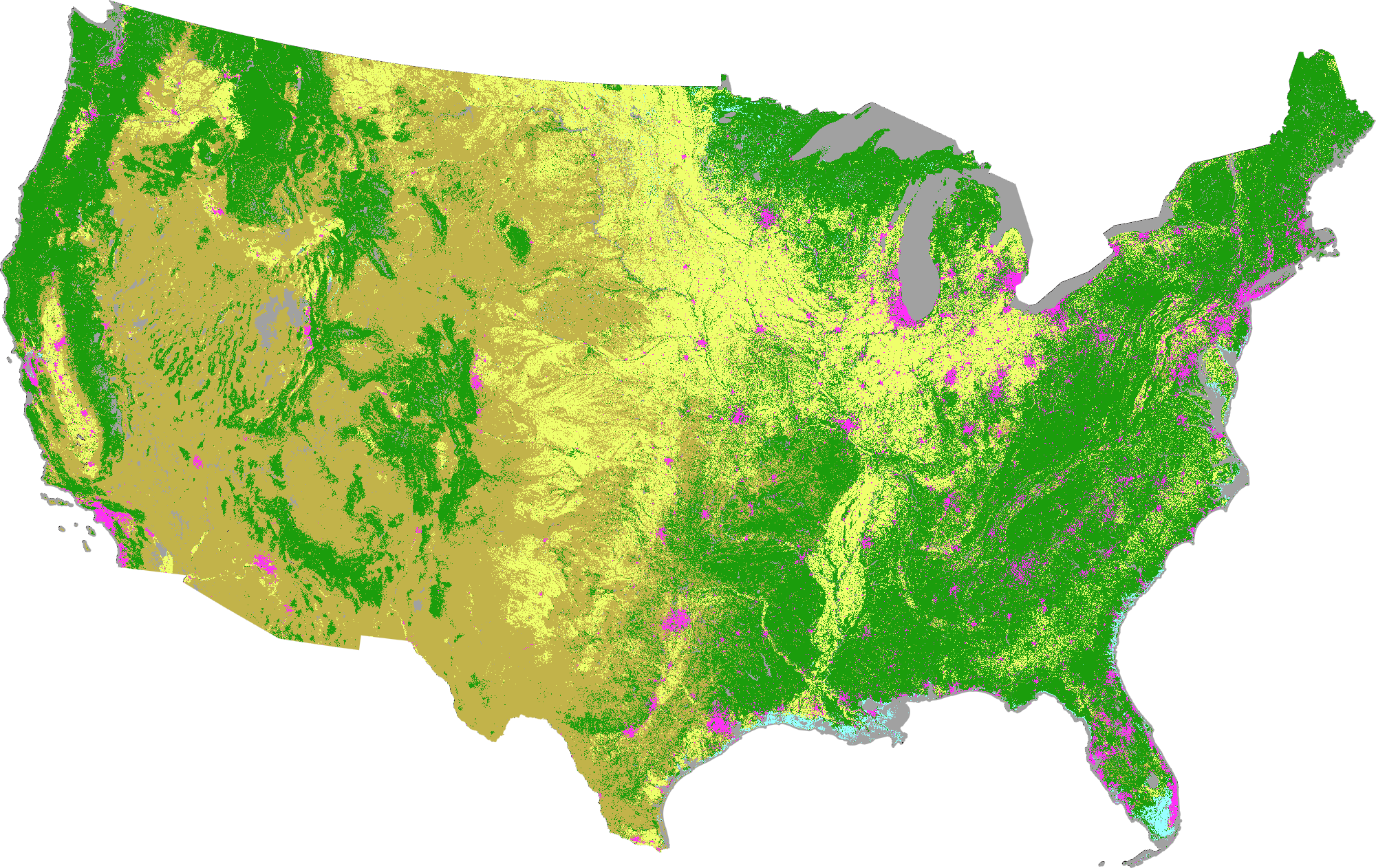
- Agriculture
- Developed
- Forest
- Non-Forest Wetland
- Other
- Rangeland
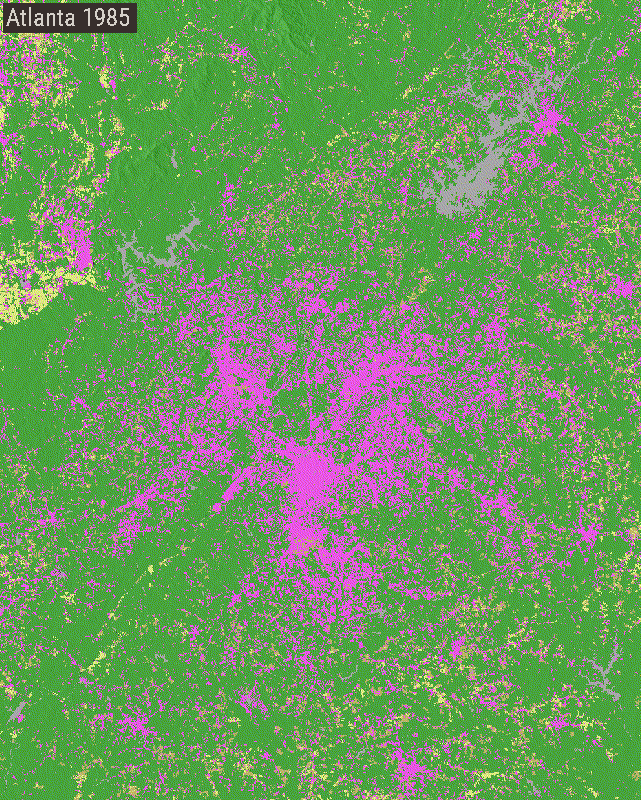
Urban development of Atlanta, Ga.
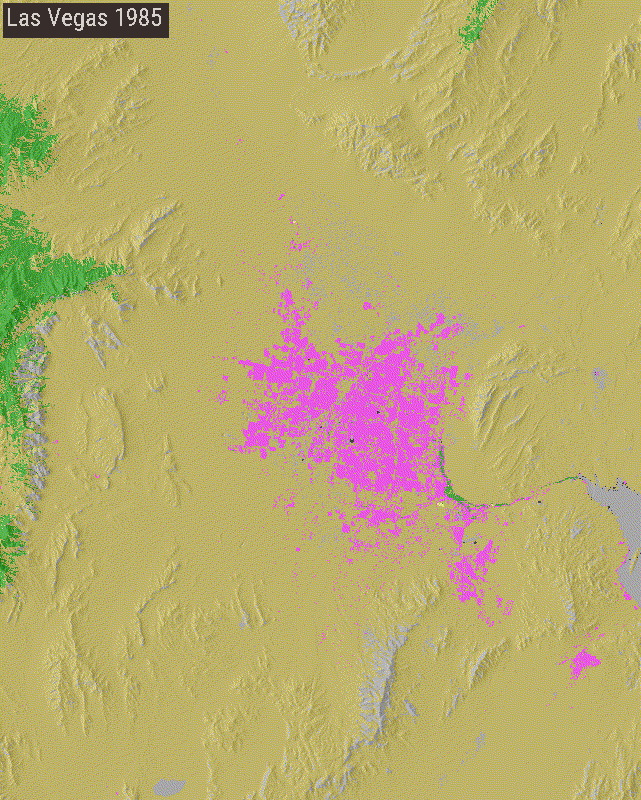
Urban development of Las Vegas, Nev.
DATA DESCRIPTIONS
Change
- Fast Loss:
Vegetation cover loss caused by short-duration events. For example, a fire or harvest that causes rapid vegetation cover change. - Slow Loss:
Vegetation cover loss caused by long-duration events. For example, mountain pine beetle-caused mortality in Rocky Mountain forests. - Gain:
Vegetation cover growth after a loss of vegetation cover. For example, new growth of tree saplings following a fire or harvest. - Stable:
Where no significant change is evident in the spectral response and the trend is essentially flat. Agricultural systems and wetlands are commonly highly variable spectrally through time, and are thus considered stable but ephemeral.
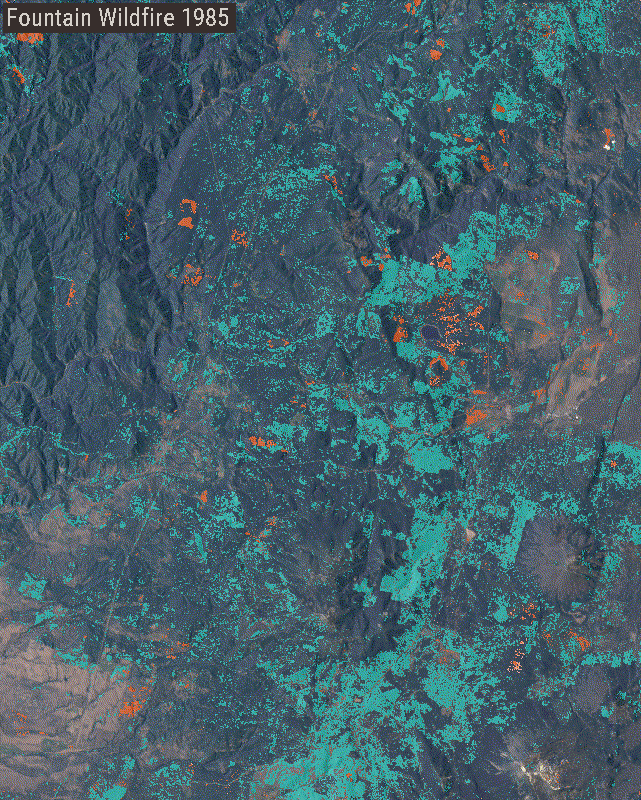
Land Cover
- Trees
- Tall Shrubs-Trees (Alaska only)
- Shrubs-Trees
- Grass-Trees
- Barren-Trees
- Tall-Shrub (Alaska only)
- Shrubs
- Grass-Shrubs
- Barren-Shrubs
- Grass
- Barren-Grass
- Barren-Impervious
- Snow or ice
- Water
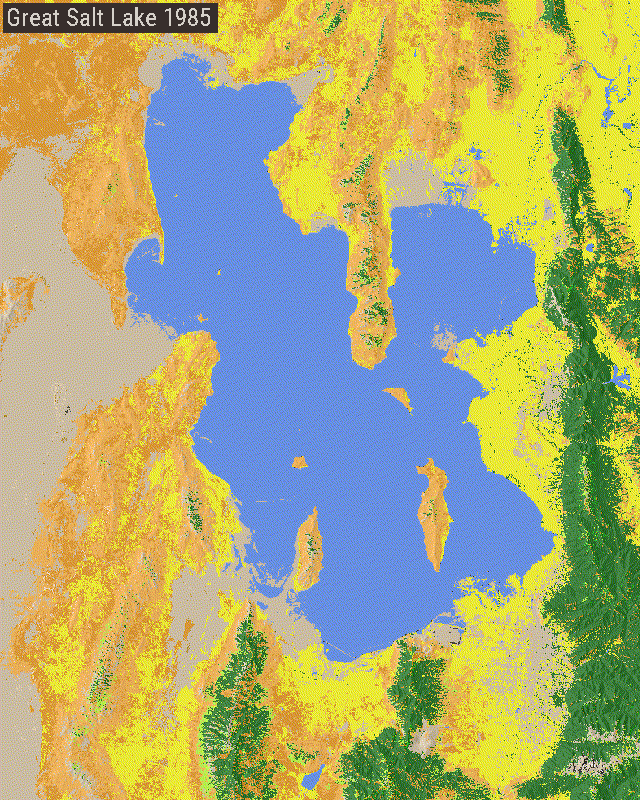
Land Use
- Agriculture
- Developed
- Forest
- Non-forest Wetland
- Other
- Rangeland or Pasture
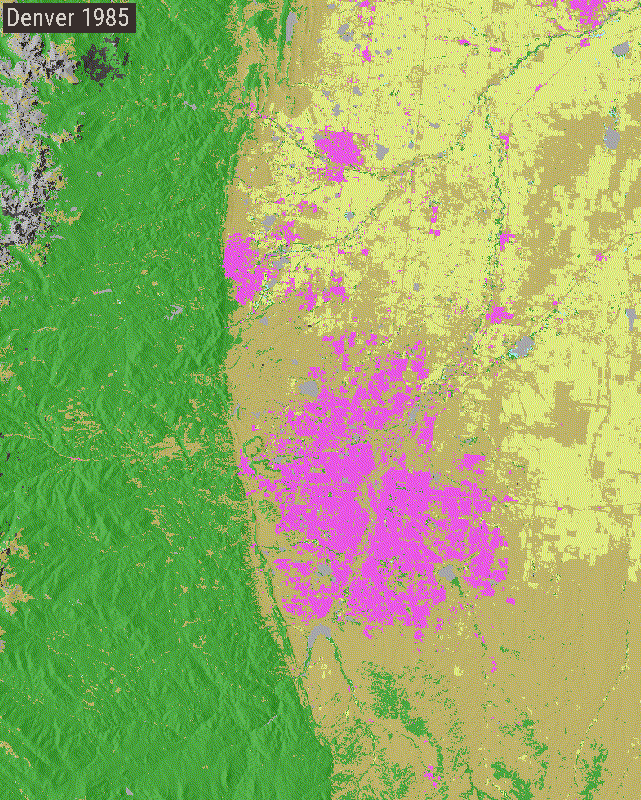
Explore LCMS Data
Several web mapping applications are available to explore, summarize, and produce reports of how our landscape is changing.
Data Explorer
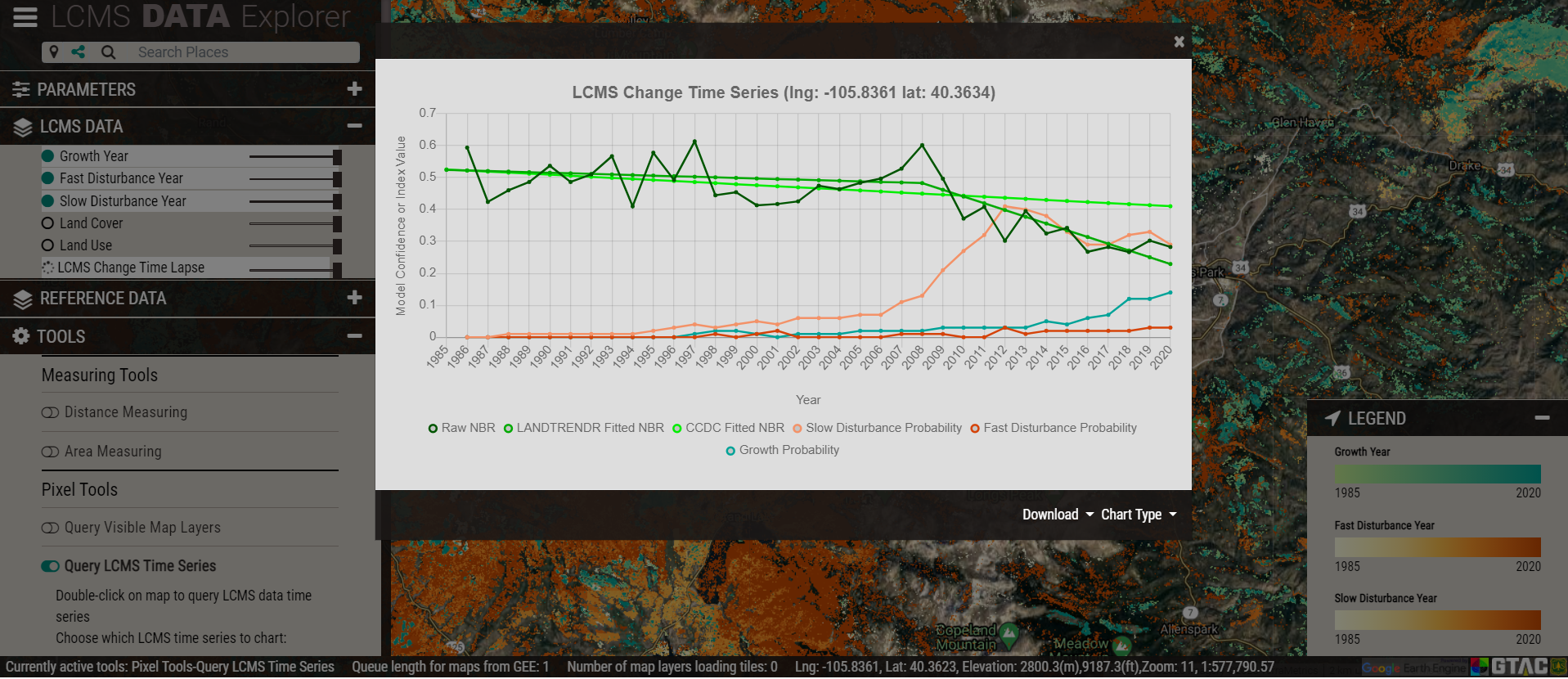
Become familiar with LCMS data and explore landscape changes in a highly interactive environment
LCMS in Motion
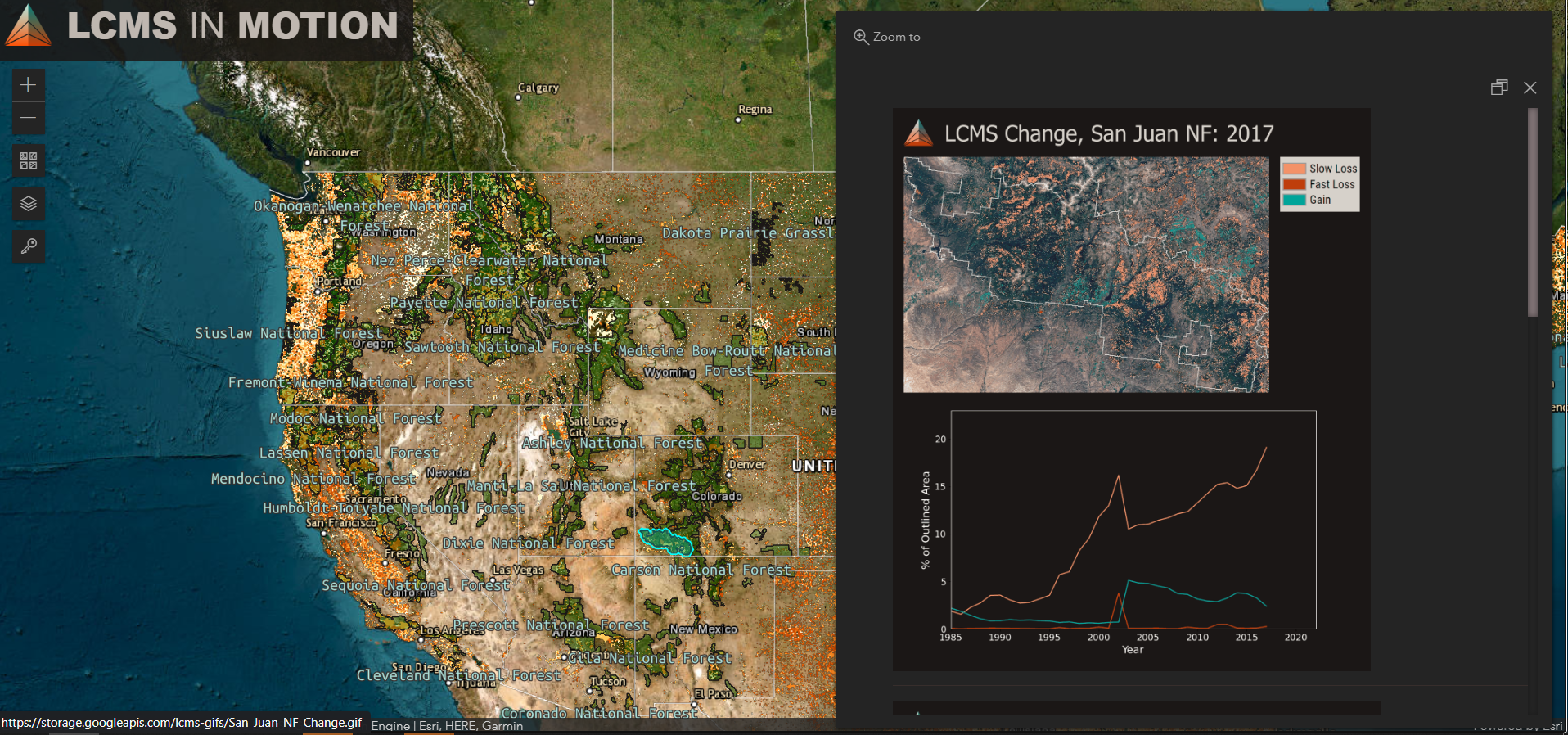
Discover our changing landscape through animation
Additional LCMS data exploration tools
Base Learner Explorer
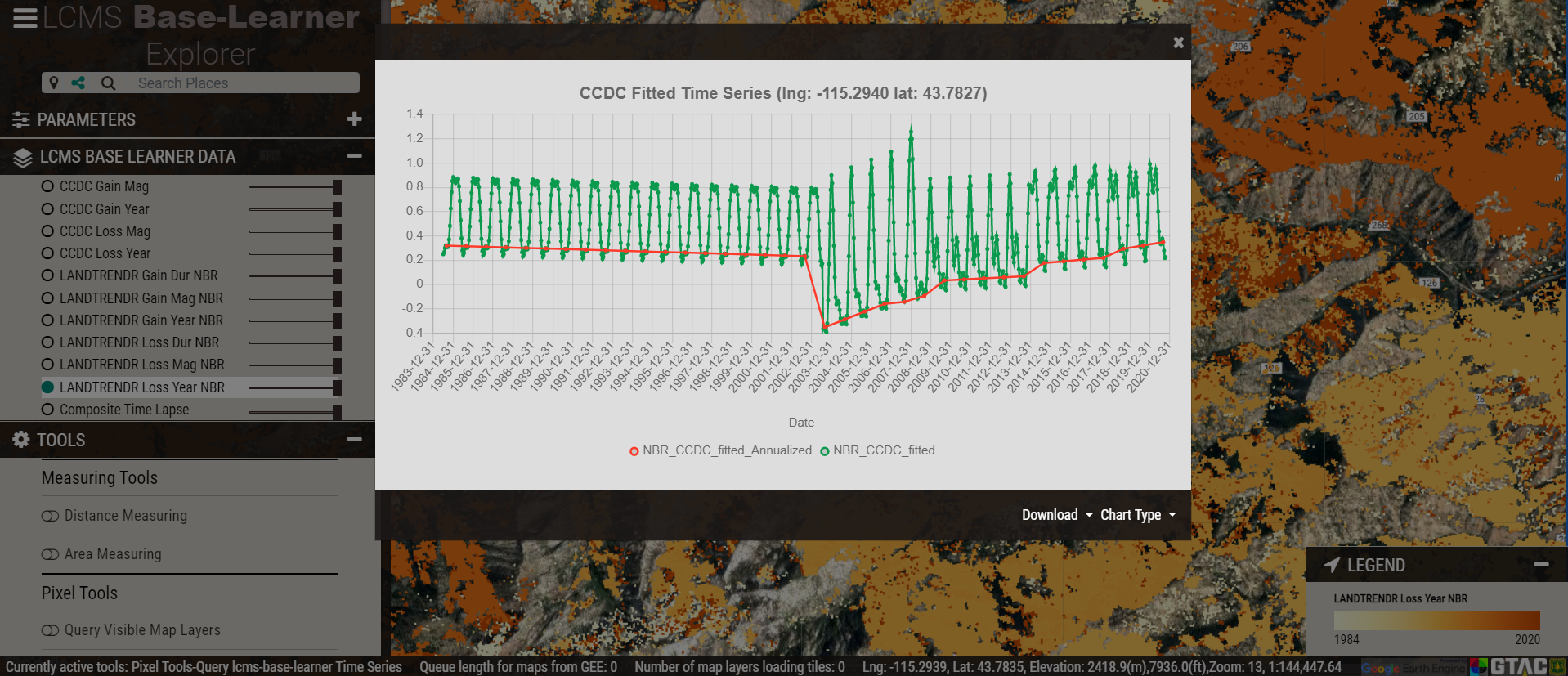
Explore the raw input data used to create the final LCMS products. This app is useful to gain insight into the strengths and weaknesses of two popular temporal segmentation methods used in LCMS.
Insects and Disease Explorer
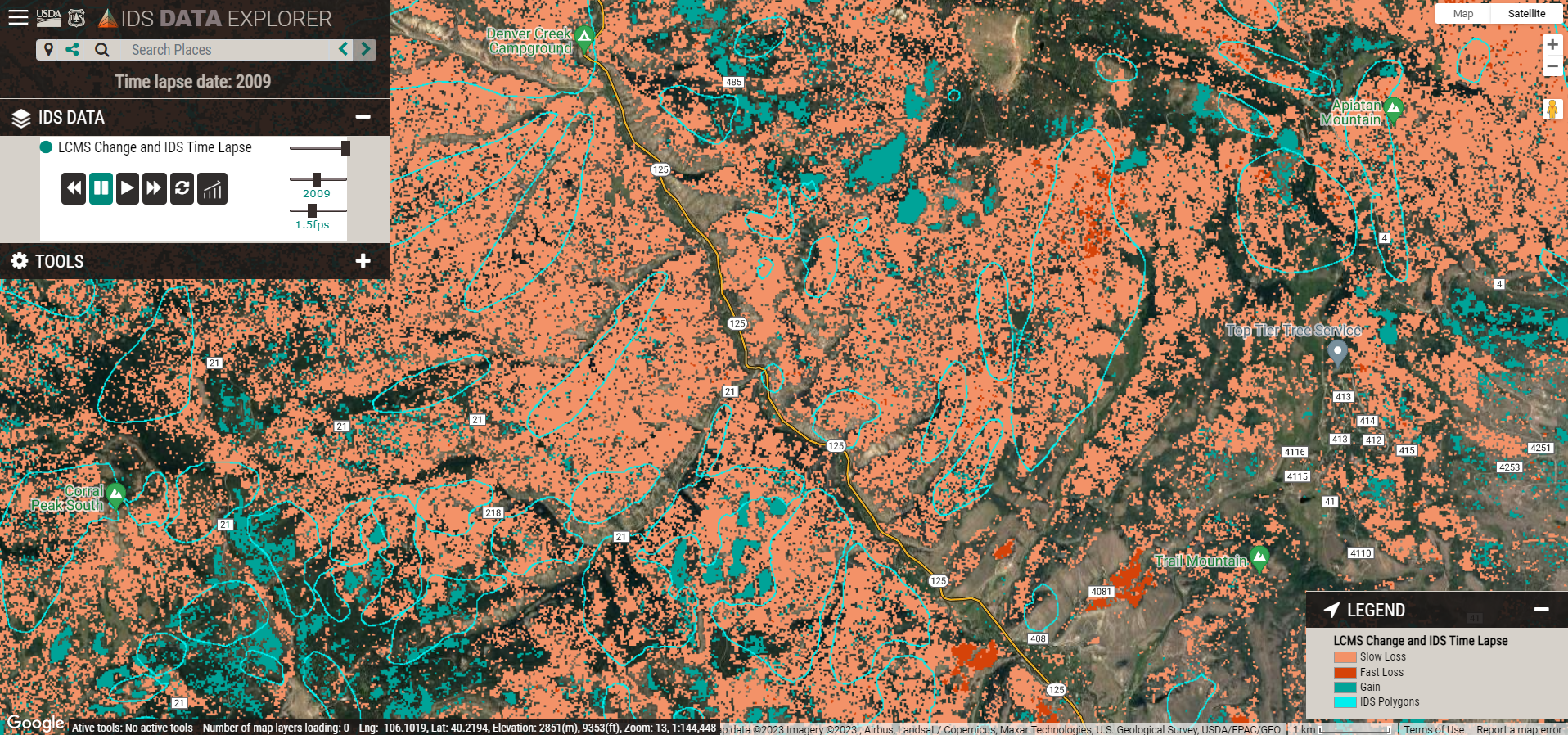
Explore how LCMS relates to the Forest Service Insects and Disease Survey (IDS) dataset.
DOWNLOAD
Click on the folders to download annual LCMS data
-
Conterminous United States
-
Change
-
Summary
-
Annual
-
Summary
-
Land
Cover
-
Land
Use
-
QA
Bits
-
Change
-
Southeastern Alaska
-
Change
-
Summary
-
Annual
-
Summary
-
Land
Cover
-
Land
Use
-
QA
Bits
-
Change
-
Puerto Rico and U.S. Virgin Islands
-
Change
-
Summary
-
Annual
-
Summary
-
Land
Cover
-
Land
Use
-
QA
Bits
-
Change
-
Hawaii
-
Change
-
Summary
-
Annual
-
Summary
-
Land
Cover
-
Land
Use
-
QA
Bits
-
Change
ABOUT
Knowing where, when, and what factors create change across landscapes is critical to making sound land management decisions. To support land managers and scientists with this need, an interagency effort between leading remote sensing scientists and application specialists in the U.S. Department of Agriculture Forest Service, U.S. Geological Survey, NASA, and numerous universities have collaborated to develop and produce a Landscape Change Monitoring System (LCMS).
LCMS is a remote sensing-based system for mapping and monitoring landscape change across the United States. LCMS provides a “best available” map of landscape change that leverages advances in time series-based change detection techniques, Landsat and Sentinel data availability, cloud-based computing power, and big data analysis methods.
The LCMS Science Team initially developed LCMS methods (Cohen et al., 2018; Healey et al., 2018). The LCMS Production Team and Science Team review methods frequently to ensure the LCMS mapping process is based on the best available science. All LCMS map products are recreated annually from 1985 to the most recent full growing season. LCMS mapping areas include all the United States and its territories. The current operational set of outputs covers the conterminous United States (CONUS), southeastern Alaska (SEAK), Puerto Rico and U.S. Virgin Islands (PRUSVI), and Hawaii (HI). Future mapping efforts will extend to Interior Alaska.
Literature
- Healey
et al 2018
- Cohen et
al 2017
- Cohen
et al 2018
LCMS Methods
Feedback
We welcome your feedback. If you would be willing to take our short user survey, the provided information will help inform future improvements and additional functionalities. Thank you.
TAKE SURVEY
-
Slow Loss
-
Fast Loss
-
Gain
CONTACT
125 S State St, Suite 7105
Salt Lake City, Utah 84138
